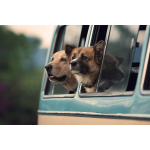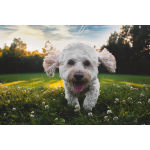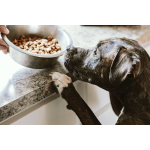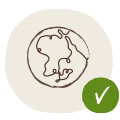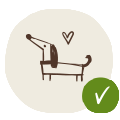
Would you like to go on vacation with your dog in the south? That's a great idea! However, so that you can sit back and relax, it's important to find out about leishmaniasis in dogs in advance. Without adequate treatment, leishmaniasis can be fatal for the dog. It is therefore crucial to find out about the options for protecting your dog at an early stage and to familiarize yourself with the measures to be taken in the event of an infection.
What is canine leishmaniasis?
The disease leishmaniasis is caused in Europe by the protozoan Leishmania infantum and is transmitted to the dog by the sand fly of the genus Phlebotomus when it sucks blood. The sand fly's habitat extends from Africa across the Iberian Peninsula and the entire Mediterranean region to the Middle East. Leishmaniasis in dogs is endemic in these areas. However, due to travel to southern countries and the import of animal welfare dogs from endemic areas, the disease is also increasingly appearing in more northern regions.
Infection with leishmaniasis
The sand fly poses the greatest risk of transmission and infection with Leishmania, but other transmission routes have also been described. For example, the pathogen can be transmitted through blood transfusions or from the mother to the unborn puppies in the uterus. In Germany, however, these transmission routes play a subordinate role.
Leishmaniasis in dogs: symptoms, treatment and course of the disease
In many cases, leishmaniasis is initially asymptomatic and only becomes clinically apparent after several months to years. However, this does not make the disease any less dangerous, as it can be severe and, in the worst case, fatal if left untreated. If the first symptoms appear, it is important to have the dog examined by a vet or veterinary clinic as soon as possible and, if leishmaniasis is confirmed, to start treatment. The earlier an infection with leishmaniasis is detected and the earlier treatment begins, the better the chances of getting the symptoms under control.
Nutrition for leishmaniasis:
If your dog has leishmaniasis, it may also be necessary to feed him a low purine diet.
The following clinical symptoms may occur:
- Lack of appetite
- Weight loss
- Muscle atrophy
- Loss of performance
- Lack of mobility
- Skin changes in the area of the puncture sites, especially around the edges of the ears, nose and abdomen
- Spectacle formation around the eyes
- Diarrhea
- Nosebleed
- Increased drinking
- Increased urine output
- Deformation of the claws
- Enlargement of the lymph nodes and spleen
In the advanced and final stages, the kidneys become involved and damaged. Depending on the severity of the disease, the symptoms are limited to the skin (cutaneous form) or also affect the internal organs (visceral form).
Can leishmaniasis in dogs be cured?
Although the clinical picture and prognosis can be improved by a generally lengthy treatment with special medication, it is unfortunately not possible to completely eliminate the pathogen from the body and cure leishmaniasis. As the disease can flare up again at a later date, it is essential to watch out for recurrences.
Is there a vaccination against leishmaniasis?
Yes, there is, but even this does not offer 100% reliable protection against infection. For frequent or longer trips to endemic areas, a vaccination against leishmaniasis may be useful as an additional preventive measure. To weigh up the pros and cons, it is best to contact your vet.
What should I bear in mind when traveling with my dog to southern countries? How can I protect my dog from infection?
If you have chosen a country in an endemic area such as the Mediterranean as your travel destination, the best protection against leishmaniasis is not to take your dog with you at all. However, if this is not possible or you do not want to do without your furry friend on vacation, you should consider the following to prevent leishmaniasis:
- Protect your dog with an effective prophylactic against sand flies before you travel. Contact your vet at an early stage to select a suitable preparation and discuss the correct application as well as any follow-up applications that may be necessary depending on the duration of the trip and the choice of product. Prophylaxis against the sand fly significantly reduces the risk of transmission.
- The sand fly is particularly active at dusk, so it is recommended that you leave your dog indoors, especially in the evening and overnight, as additional protection and to equip windows and doors with mosquito nets.
Do you have further questions?
Feel free to contact our nutrition experts. They will be happy to help you by e-mail and by telephone via our free hotline.
Phone: +49 (0) 800 333 8 222 (free of charge)
E-Mail: expertenteam@bosch-tiernahrung.de
Monday - Thursday: 7.30 - 12 o'clock & 13 - 16 o'clock
Friday: 7.30 - 12 o'clock & 13 - 15 o'clock

